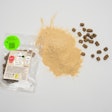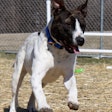The 102nd Annual Convention of the Association of American Feed Control Officials was held July 30 to August 1, 2011, in Austin, Texas, USA. There were some, but not very many, items directly affecting petfood.
Since the AAFCO recently changed its procedures so the membership now votes at both the annual and midyear meetings, the number of items up for consideration in the general session seemed fewer this year than at annual meetings past. In fact, most of the committees, including the Pet Food Committee, had no actionable items up for vote.
The AAFCO membership did vote to accept changes to the regulations affecting the label declaration of guarantees for specialty petfoods as brought forth by the Model Legislation & Regulation Committee. The guaranteed analysis on bird, reptile, fish and small mammal food labels now must appear in the same format as guarantees for dog and cat foods instead of that for livestock feeds. Manufacturers will have until January 2013 to revise their labels.
Among the items up for vote from the Ingredient Definitions Committee, the item of most impact on the petfood industry is the definition for L-carnitine. As revised, the definition now makes clear that it may be added to any dog and cat food, including treats and supplements, not just complete and balanced foods. The maximum inclusion rate of 750 mg/kg dry matter for dog foods and 1,000 mg/kg dry matter for adult cat foods still applies to all types of food.
The Pet Food Committee session covered many items, but in most cases action was deferred to the midyear meeting in January 2012. The expert panel for the AAFCO Dog and Cat Food Nutrient Profiles and feeding trial protocols will review the comments received on its draft recommendations and provide a final version for consideration by the Committee at the next meeting. The Carbohydrate Working Group will also provide its recommendations in January.
Over the next few months, a small group of regulators will put the final touches on the revised affidavit for calorie content statements to be consistent with the Regulation PF9 (passed by the Committee at the last meeting, which in part mandates calorie content statements on all dog and cat food labels) as well as the proposed amendments to Regulation PF10 (which would set requirements for “weight control” and similar claims). That should provide enough time for review of these documents by interested parties before discussion and possible action at the midyear meeting.
Other items brought to the Pet Food Committee included the revision to the committee’s purpose statement as suggested by the AAFCO Board of Directors (AAFCO Official Publication, 2011). Since the time frame to get back to the board is short, the comment period will have closed before this column is published. Also discussed was the development of an AAFCO statement expressly objecting to claims such as “AAFCO approved” on pet product labels. The matter will be open for a few months for comment on proposed language.
After discussion, there was consensus in the committee that allowing minimum and/or maximum voluntary guarantees for some nutrients did not conflict with the general model feed regulations. A small working group was formed to investigate concerns expressed by an outside organization that the AAFCO’s guidelines for plaque and tartar control claims were inconsistent with Food and Drug Administration policies.
The Ingredient Definitions Committee accepted proposed changes to the definitions to better distinguish meat meal from meat and bone meal on the basis of phosphorus content, with some overlap (meat meal <4.5% P, meat and bone meal >3.5% P). It also discussed some new feed terms that could affect petfoods, such as “popped” and “puffed,” but the investigator withdrew the items from further consideration at this time. On the other hand, “powdered” was accepted by the committee as a new feed term.
The Model Legislation & Regulation Committee is still waiting to receive a charge by the board to review the amendments to Regulation PF9 as previously passed by the Pet Food Committee. The Feed Labeling Committee has formed working groups to consider a requirement for minimum and maximum selenium guarantees for feeds containing over 0.5 parts per million selenium and a maximum sulfur guarantee for feeds containing more than 0.5% sulfur. It is unclear whether these items could apply to petfood labels at this time.
A proposal to the Feed Labeling Committee to require phone numbers to accompany the guarantor’s name and address was dropped after discussion.



















